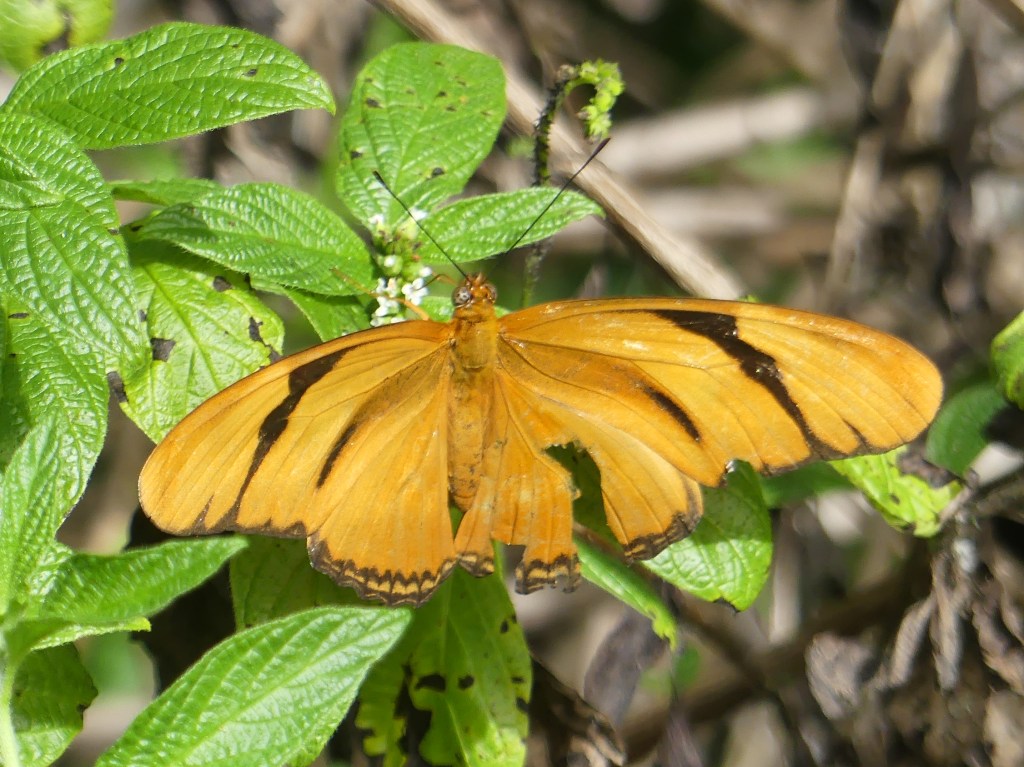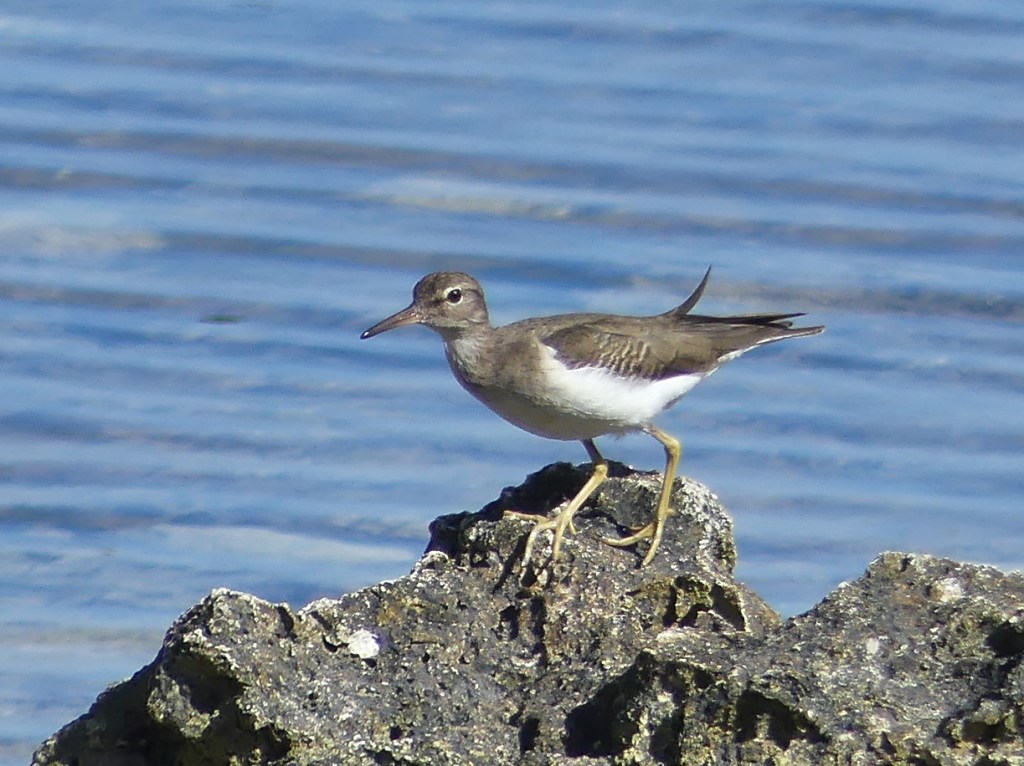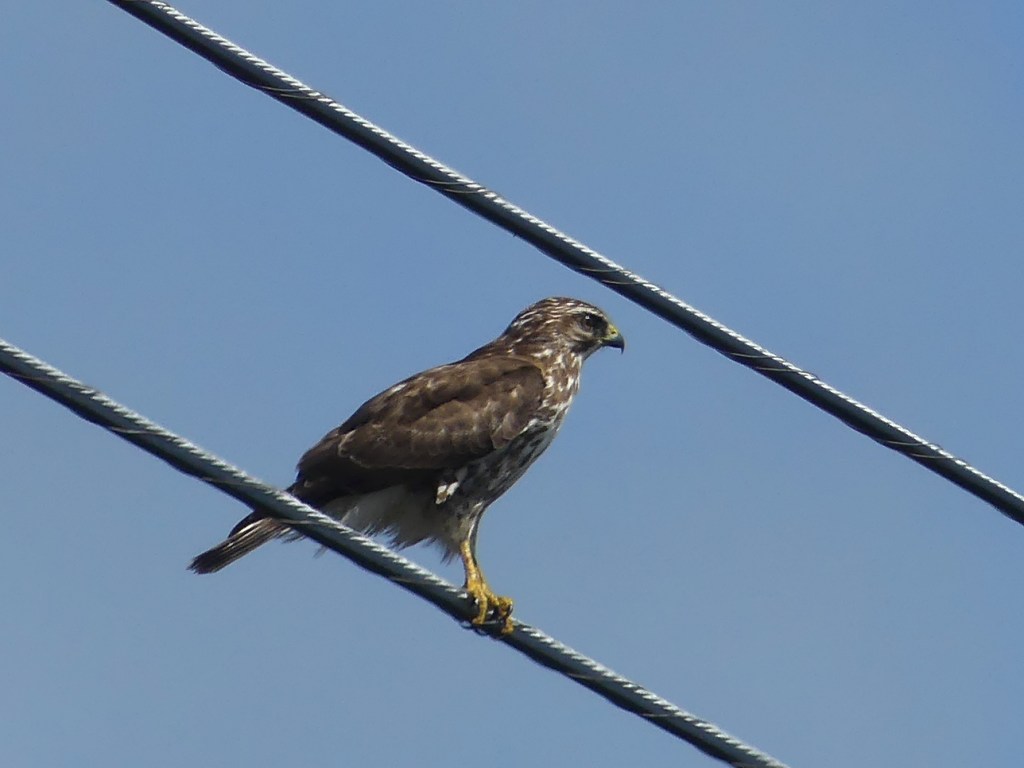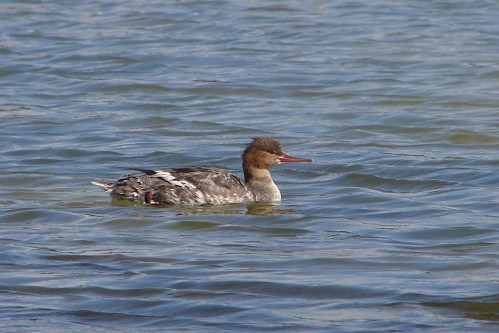If you missed Part 1, read it here.
The third life bird that I hoped to find in Florida was a La Sagra’s Flycatcher that was being seen in the Everglades. David’s ride on Monday was one of his shorter ones, so we had time to look for the flycatcher late that afternoon. We did not find the bird, but we still had a “bonus day” that we could use to look for it again. I wanted more than one more chance, though. You can never know how long a bird will stick around. And, this looked like my last chance to get a life bird in Florida.
David agreed to look for the La Sagra’s again on Tuesday morning before starting his long ride from Florida City to Marathon. But, we still couldn’t find our target. However, David did find the nest of the Red-shouldered Hawks that were being seen close by. And, both adults were snuggled together in the nest! Neither of us had ever seen this before.

Around 9:00 AM, Angel Abreu showed up with a friend who also wanted the La Sagra’s Flycatcher. Angel is not only one of the best birders in South Florida, he’s one of my favorite people in the world and I was very happy to see him. But, he didn’t find the bird right away either. After looking for another hour, we were in the car driving away when Angel excitedly flagged us down because he had the flycatcher! During the next hour, we had several excellent looks at our bird and heard it’s distinctive call. I was thrilled, but our wonderful morning meant that David didn’t start riding until noon that day.
Later, at Crocodile Lake NWR, I played hide-and-seek with a White-eyed Vireo for 20 minutes before giving up. These birds winter in Florida in high numbers, but they prefer not to be seen. I photographed a few butterflies instead. This female Julia Heliconian is a bit faded and tattered, but still beautiful.

David had a long day, but just before 6:00 PM, he achieved his goal of making it to Marathon – 78 miles on the bike!
We left Florida City early the next day and drove back to Marathon where David got on the bike for the final leg of his ride. I had nearly an hour before meeting David at his first rest stop, so I walked part of the Curry Hammock State Park Nature Trail that we had found the previous evening. I didn’t see anything unusual, but it was a pleasant way to start the day. I liked seeing this Spotted Sandpiper, pretty even in winter without its spots.

After meeting David with water and a snack, I walked along a paved path by the water on Big Pine Key and found a Broad-winged Hawk. These birds breed in my area and farther north, but this might have been the first Broad-wing that I’ve seen in winter in the US.

David made it to Key West by mid-afternoon. We were both elated that he had fulfilled his dream of doing this ride. I had a difficult time finding safe and legal parking near his end-point, Mile Marker 0, so I stayed with the car in the courthouse parking lot in a nice shady spot. David met me there and while he was changing into clean dry clothes, we saw a hawk flying overhead. We thought it was a Short-tailed Hawk and photos confirmed our identification. It was the third one of the trip, but the first one that I had ever found and identified without help from a more experienced birder, so a little goal of mine was accomplished, too.

We bought some souvenirs and headed over to Mallory Square. David enjoyed a celebratory beer and then we headed back to Florida City. We made a couple of quick stops on our way and found a Great White Heron in Sugarloaf Key just before dark. This is the white form of Great Blue Heron and it is considered to be the same species. It is rarely found outside Southern Florida and I had seen one only once or twice before.

We had not needed to use our “bonus day” for a weather emergency or injury, so we had a free day for birding. We spent the day in the Everglades National Park as we had hoped to do. We stopped at nearly every possible area as we worked our way towards Flamingo. David and I both love just watching birds “live their lives” as he puts it and seeing new behaviors. Our favorite experience that day was at Pahayokee Overlook observing a Great Egret bathe. In all our years in Florida, neither of us had ever seen a heron or egret take a bath before. I tried to get a video, but as soon as I hit “record,” the bird stopped splashing.

David got in a few miles on the bike in the park and we saw many more birds, especially at Mrazek Pond, where we both enjoyed helping visitors get on some of the harder to find birds. You had to know just where to look to see the Roseate Spoonbill that David found way in the back of the pond or the Green Heron hiding on one side.
The time to head back to Dunedin came all too soon. I would have loved a few more days in South Florida. We prolonged our nature watching for as long as possible by driving the Loop Road Scenic Drive off US 41 on the way home. It had been many years since I was there, but Sweetwater Strand was just as magical as I remembered. My favorite photo from that spot is this Great Blue Heron.

After the birding and biking adventure with David, I set off for Gainesville and some family time with my granddaughters and son-in-law. And, then it was on to Atlanta to see my step-daughter before finally driving home.
I find that long road trips are a lot easier if I take breaks, so I stop often to walk a little and look for birds. You might be surprised at what you can find at highway rest stops. At the “Welcome to Georgia” rest area, I was pleased to see this lovely little Yellow-throated Warbler. It looks like he (or she) is singing for tips, but actually it is just picking at the nut.

Later that day, I met another birder at a rest stop for the first time. We enjoyed talking about birds and watching a flock of about 30 Cedar Waxwings.
After I got home, I had one more bird to see – a Western Tanager that had shown up the day after I left for Florida. This is a western bird as its name implies, but there have been several vagrants in North Carolina this winter. This particular bird, though, was the first one seen in Forsyth County since 1987. Luck was with me this time and I saw the tanager after waiting less than an hour. With birds, you never know what you are going to miss and what you will see. That uncertainly is what makes birding both addicting and fun.
Read part two of David’s story on his blog in Bicycling Naples to Key West – Part 2.











